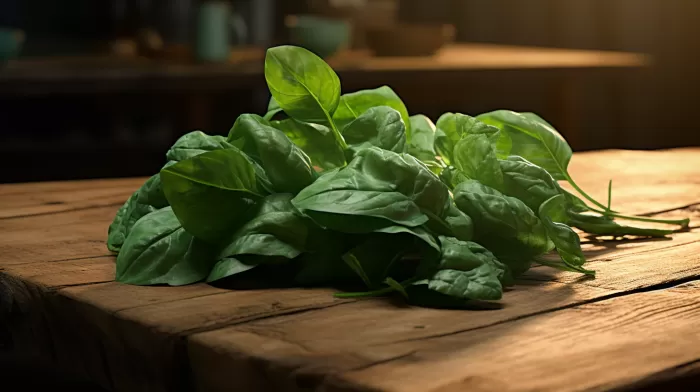If you’re already a fan of nutritious and tasty sweet potatoes, then it’s time to take advantage of their equally beneficial leaves. Barely known and seldom consumed, sweet potato leaves are packed with vitamins and nutrients that can elevate your health. Many people consume the root of the sweet potato, which provides significant fiber, carotenoids, and vitamin C, but here’s why you should start eating the leaves, too.
The Nutritional Advantages of Sweet Potato Leaves
Researchers at the Louisiana State University Agricultural Center have found that the leaves of the sweet potato plant are an excellent source of B vitamins, among other advantageous vitamins and nutrients. In a study that compared several types of sweet potatoes and their edible parts, the scientists found that young leaves have the highest vitamin C content, but mature leaves and buds are also good sources. Interestingly, they found that sweet potato buds are richer in vitamin C than the roots we usually eat.
A Surprising Absence and a Remarkable Health Boost
The study unexpectedly revealed the lack of thiamin (vitamin B1) in sweet potato leaves, which could potentially be explained by differences in cultivars. Nonetheless, the researchers remain confident in the health advantages of sweet potato leaves, emphasizing that mature and young leaves can provide significant amounts of vitamin B6 in our diets.
Vitamins for Optimum Health
There are numerous health benefits associated with increased vitamin B6 intake, including improved brain function, better mood regulation, cardiovascular support, and hormonal balance, to name a few.
Additionally, the abundant vitamin C found in sweet potato leaves contributes to various health advantages, such as boosting the immune system, maintaining healthy skin, and promoting better eye health.
How to Cook and Enjoy Sweet Potato Leaves
Considering all these health benefits, you will probably want to leap into action and start devouring these fantastic leaves; however, remember that safe handling and proper preparation are key to enjoying this barely-known superfood.
Before you begin, it’s essential to ensure that the sweet potato greens you are using come from a safe and clean source. If you grow your own sweet potatoes, you’ll know you have chemical-free leaves. But if you don’t, you can find sweet potato leaves at selected farmers’ markets or specialty grocery stores.
Once you have the perfect sweet potato leaves, follow these steps:
- Preparation: Start by removing the sweet potato leaves from the stems and setting them aside. Remove the smaller stems from the larger, tougher ones, discard the larger stems, and roughly chop the smaller ones.
-
Sauté: Sautéing is an easy and delicious way to cook sweet potato leaves. Heat some olive oil in a medium-sized pan over medium-high heat. Add diced onion and sauté until softened or for about three minutes. Add the chopped stem pieces and sauté for around five minutes or until tender. Lastly, add the leaves, salt, and pepper to taste, and some maple syrup. Sauté until the leaves are wilted, and then serve.
Even though sweet potato leaves are currently an underutilized food source, their numerous health benefits make them a fantastic addition to your meals. So next time you enjoy a delicious sweet potato dish, remember that the leaves can be just as tasty and nutritious, offering a whole new dimension to an already-popular vegetable.



